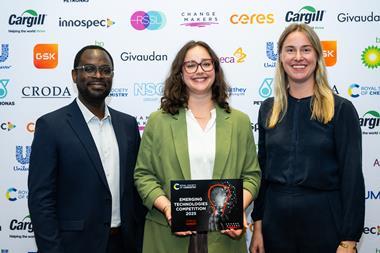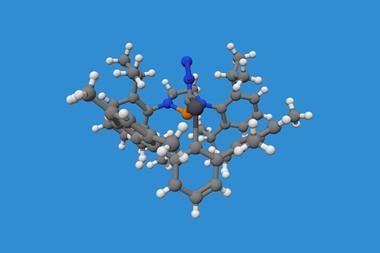Microbial fuel cells efficiently generate gas from wastewater
Scientists in the US have drastically improved the efficiency of bacteria-powered fuel cells that convert biodegradable organic matter into hydrogen gas. They hope their discovery will make it possible to generate hydrogen from sewage, sustainably and on a large scale.
Bruce Logan, who led the team at Penn State University, Pennsylvania, told Chemistry World: ’Previously, we couldn’t get a lot of hydrogen from our systems and our energy input was high. This new method has high production rates and overcomes all our limitations. It is feasible to make hydrogen from anything, like banana peel and apple cores... but the best prospect may be waste cellulose.’
Although hydrogen is considered to be an important fuel of the future, current production methods require non-renewable fossil fuels. The alternative - extracting it from the electrolysis of water - is too energy intensive to be practical. But there is an abundant source of hydrogen running directly under our streets - locked up in the form of sewage. This biomass contains huge amounts of organic compounds, such as cellulose, that can be converted into fuel.
Microbial fuel cells were originally designed to generate electricity. These cells contain "exoelectrogenic" bacteria that can chew up organic compounds, converting them into electrons and hydrogen ions (protons). The protons combine with oxygen to produce water at the cathode of the system, causing a net flow of electrons and generating electricity.
Logan’s team altered the system by removing all oxygen and deliberately adding a flow of electricity to the system to catalyse hydrogen gas formation. Importantly, the team changed from using a proton exchange membrane in the system to an anion exchange membrane. ’This allows negatively charged species to carry protons to the cathode,’ explained Logan.
The team demonstrated their fuel cell by converting glucose, cellulose and several acidic by-products into hydrogen. They were able to show stoichiometric yields of hydrogen gas ranging from 54 per cent to 99 per cent. Thanks to efficient energy conversions from input fuel, Logan said that the cell generated almost three times more available energy (in the form of hydrogen) than the electrical energy boost added to make the process work in the first place.
Although these fuel cells do not produce hydrogen quickly enough for smaller applications, it is hoped that larger fuel cells could be set up next to existing sewage treatment plants. These would produce a constant supply of cheap hydrogen to fuel cars or provide electricity to the local area.
Lars Angenent researches microbial fuel cells at Washington University in St. Louis, Missouri, US. He told Chemistry World: "The efficiency in this process is high and it works well at a small scale. The question is whether or not this can be scaled up and maintain the efficiency. If so, this could prove to be useful."
Lewis Brindley
Enjoy this story? Spread the word using the ’tools’ menu on the left .
References
Proc. Natl. Acad. Sci., 2007; DOI: 10.1073/pnas.0706379104






No comments yet